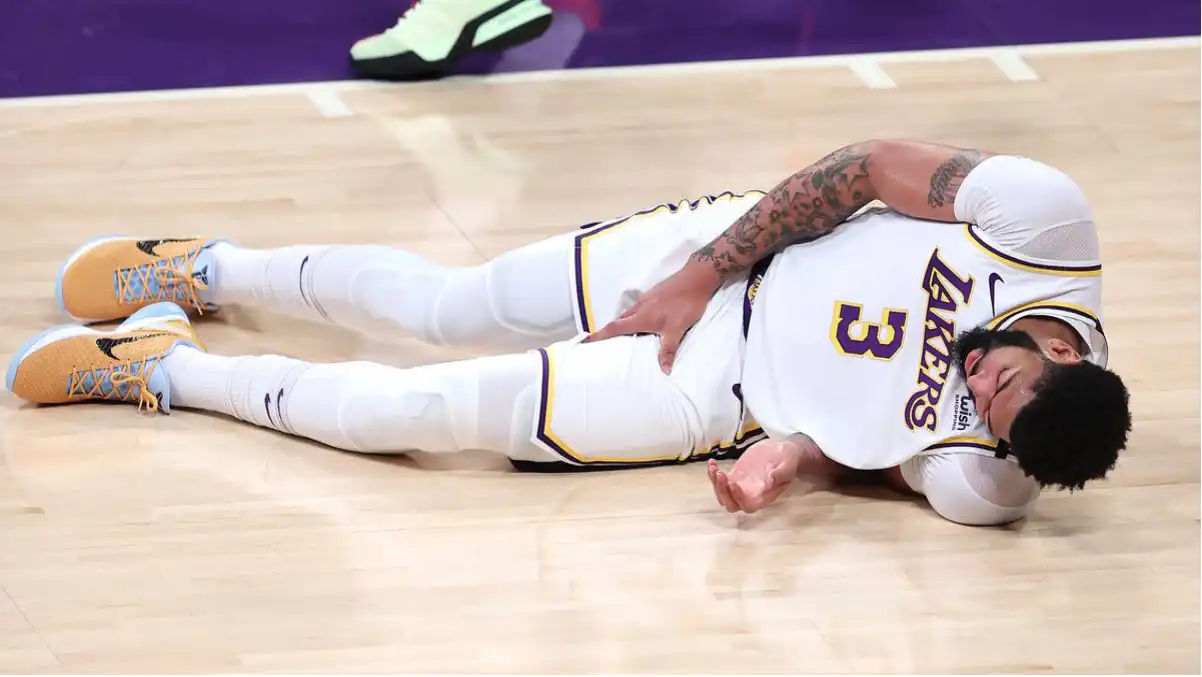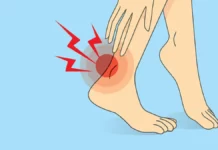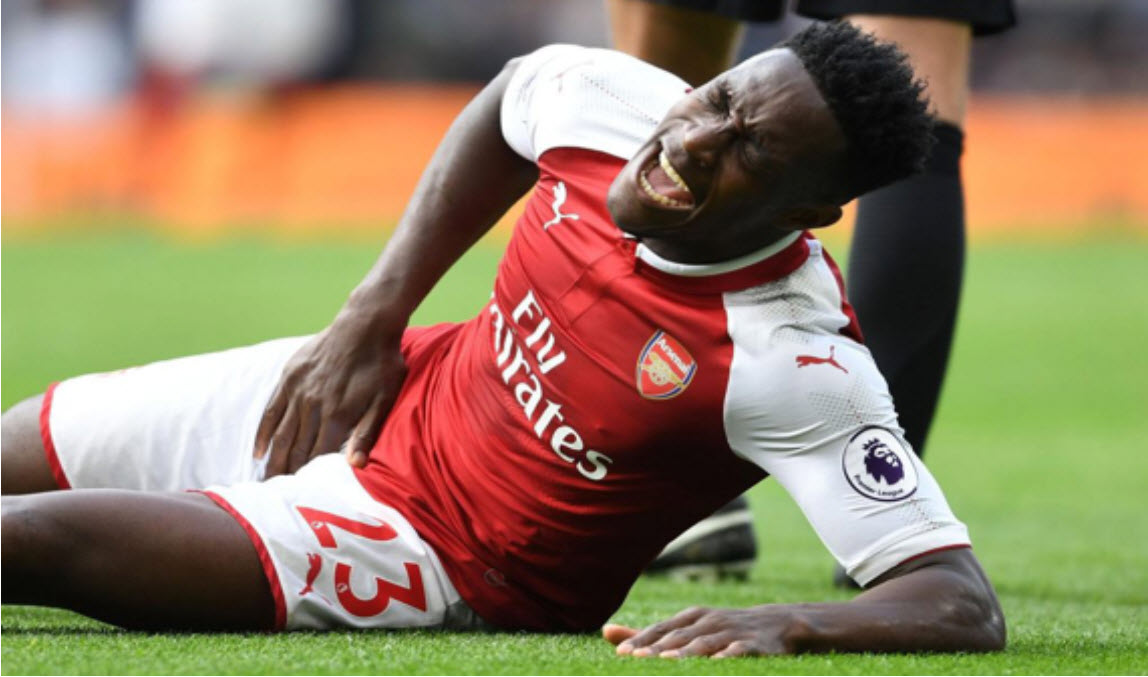Adductor tear, also known as adductor strain, is a common muscle injury that affects the muscles located on the inner thigh, responsible for adduction of the leg.
Introduction
Adductor tears, a condition affecting the muscles of the inner thigh, can have a significant impact on athletic performance and daily activities. These tears often occur during activities that involve sudden changes in direction, acceleration, or deceleration, placing strain on the adductor muscles. The adductor group, comprising muscles such as the adductor longus, adductor brevis, and adductor magnus, plays a crucial role in stabilizing the hip and facilitating movements like lateral leg raises and bringing the legs together. When these muscles experience excessive force or are subjected to rapid, forceful stretching, tears or strains may result.
One common scenario leading to adductor tears is participation in sports that require quick and forceful movements, such as soccer, hockey, or sprinting. Athletes engaging in these activities, especially those that involve sudden changes in direction or kicking motions, are more susceptible to adductor injuries. Additionally, inadequate warm-up, poor flexibility, and muscle imbalances may contribute to the vulnerability of the adductor muscles, increasing the risk of tears.
The symptoms of adductor tears can vary in severity. Individuals may experience sudden sharp pain in the inner thigh during the inciting activity, accompanied by swelling and tenderness. Pain may worsen with movements that engage the adductor muscles, such as bringing the legs together or attempting lateral movements. In more severe cases, individuals may notice bruising along the inner thigh, indicating damage to blood vessels within the torn muscle fibers.
Diagnosis typically involves a thorough clinical assessment, including a review of medical history and physical examination. Imaging studies, such as ultrasound or MRI, may be employed to visualize the extent of the tear and assess the severity. Classification of tears may range from mild (Grade 1) involving minimal disruption of muscle fibers to severe (Grade 3) with complete tearing and loss of muscle function.
Management of adductor tears encompasses both conservative and, in some cases, surgical approaches. Conservative measures often involve rest, ice, compression, and elevation (RICE) in the initial stages to reduce swelling and inflammation. Physical therapy plays a pivotal role in the rehabilitation process, focusing on strengthening exercises, stretching, and gradual return to activity. In cases of more severe tears, where conservative measures prove insufficient, surgical intervention may be considered to repair the torn muscles.
Preventing adductor tears involves incorporating targeted exercises into a comprehensive strength and flexibility program. Warm-up routines that specifically address the adductor muscles, along with proper technique during sports activities, can reduce the risk of injury. Maintaining overall lower limb strength and flexibility through regular exercise can contribute to better resilience against adductor tears.
In conclusion, adductor tears represent a common injury, particularly in sports requiring dynamic movements. Understanding the risk factors, recognizing symptoms, and implementing appropriate management strategies are essential components of addressing adductor tears. Whether through conservative measures or surgical intervention, a tailored approach to rehabilitation is crucial for optimizing recovery and minimizing the risk of recurrence, allowing individuals to regain strength and resume their chosen activities with confidence.

Causes of adductor tears
Adductor tears, a prevalent injury affecting the muscles of the inner thigh, can be attributed to a variety of causes, often revolving around the dynamic stresses placed on these muscles during physical activities. One primary cause of adductor tears is abrupt changes in direction or sudden accelerations and decelerations, especially common in sports that demand quick and forceful movements. Athletes engaging in activities like soccer, hockey, or sports requiring explosive lateral movements are particularly susceptible to adductor injuries. The rapid shifts in momentum and intense muscle contractions during these activities can overwhelm the adductor muscles, leading to tears or strains.
Inadequate warm-up practices before engaging in strenuous physical activities contribute significantly to the risk of adductor tears. Insufficiently warmed-up muscles are less pliable and more prone to injuries when subjected to sudden and forceful movements. Proper warm-up routines, including dynamic stretching and gradual activation of the adductor muscles, play a crucial role in preparing the body for the demands of intense physical exertion.
Muscle imbalances and weaknesses within the lower limb region can also predispose individuals to adductor tears. If the adductor muscles are disproportionately weaker compared to their opposing muscle groups, they may struggle to withstand the forces exerted on them during certain activities. Addressing muscle imbalances through targeted strength training exercises, including those focusing on the adductor group, can contribute to injury prevention.
Poor flexibility within the adductor muscles themselves or in adjacent muscle groups can increase the risk of tears. Limited flexibility restricts the range of motion and adaptability of the muscles, making them more susceptible to strain during activities that demand extensive movement. Regular stretching exercises that specifically target the adductor muscles and surrounding areas can enhance flexibility and reduce the likelihood of tears.
Individual anatomical factors, such as variations in muscle insertion points or alignment of the lower limb, may also contribute to the vulnerability of the adductor muscles. These structural aspects can influence how forces are distributed across the muscles during movement, potentially predisposing certain individuals to adductor injuries.
Ultimately, the causes of adductor tears are multifaceted, involving a combination of biomechanical, anatomical, and lifestyle factors. Understanding these contributing factors is crucial for implementing effective preventive measures. Athletes and individuals engaging in activities prone to adductor stress should prioritize comprehensive warm-up routines, address muscle imbalances through targeted exercises, and incorporate regular stretching into their fitness regimens. Additionally, proper technique during sports activities, adequate rest between intense sessions, and early recognition of warning signs can collectively contribute to minimizing the risk of adductor tears and promoting overall lower limb health.
- Overuse: Excessive stress on the adductor muscles due to intensive sporting activities, frequent workouts or repetitive movements can lead to muscle fatigue and increase the risk of tearing.
- Insufficient warm-up: Inadequate warm-up before physical activity can make muscles less flexible, increasing vulnerability to injury, including adductor tears.
- Muscle weakness: Weakened adductor musculature can lead to a reduced ability of muscles to support load and absorb shock, increasing the risk of injury.
- Improper exercise technique: Using incorrect technique during exercise, especially during adduction movements, can place excessive strain on the muscles, contributing to the occurrence of tears.
- Muscle Imbalance: An imbalance between the adductor and abductor muscles (responsible for spreading the leg) can create uneven tension on the muscles, promoting the development of tears.
- Anatomical factors: Individual anatomical differences, such as muscle length, can influence the susceptibility to adductor tears.
- Returning too quickly: Returning to strenuous physical activity too quickly after a period of inactivity can increase the risk of injuries, including adductor tears.
- Environmental Conditions: Environmental conditions such as slippery terrain or an uneven playing surface may increase the risk of sudden movements resulting in tearing
Symptoms of adductor tear
Adductor tears manifest through a constellation of symptoms, reflecting the strain and damage incurred by the muscles of the inner thigh. One hallmark symptom is acute and localized pain along the inner thigh. Individuals often experience a sudden, sharp pain during the activity that caused the tear, such as a rapid change in direction, kicking motion, or forceful leg movement. This pain can range from mild to severe, depending on the extent of the tear, and may be exacerbated by attempts to engage the adductor muscles, such as bringing the legs together or attempting lateral movements.
Swelling in the affected area is another common symptom of adductor tears. The inflammatory response triggered by the muscle injury leads to the accumulation of fluid, resulting in visible and palpable swelling. This swelling contributes to a sense of fullness or tightness in the inner thigh, adding to the discomfort experienced by individuals with adductor tears.
Tenderness along the inner thigh is often noted upon palpation of the affected area. The injured adductor muscles become sensitive to touch, and individuals may identify specific points of tenderness corresponding to the site of the tear. This tenderness is indicative of the localized damage and inflammation within the muscles.
Stiffness and reduced range of motion in the hip and groin area are prevalent symptoms of adductor tears. The injured muscles may become less flexible, leading to difficulty in performing movements that engage the adductors. Activities like bringing the legs together or attempting lateral leg raises may be restricted, highlighting the impact of the tear on overall hip and thigh mobility.
In more severe cases of adductor tears, individuals may observe bruising along the inner thigh. The rupture of blood vessels within the torn muscle fibers results in the leakage of blood, manifesting as discoloration and visible bruising. The presence of bruising serves as a visible indicator of the severity of the tear and the associated vascular damage.
The symptoms of adductor tears can significantly impact daily activities, particularly those involving lower limb movements. Walking, climbing stairs, and engaging in sports or physical activities become challenging due to pain, swelling, and reduced flexibility. Individuals may also notice weakness in the affected leg, affecting their ability to bear weight or perform tasks that require lower limb strength.
Diagnosis of adductor tears typically involves a thorough clinical assessment by a healthcare professional, including a review of symptoms, a physical examination, and possibly imaging studies such as ultrasound or MRI to visualize the extent of the tear. Early recognition of these symptoms is crucial for prompt intervention and effective management, which may involve rest, ice, compression, and elevation (RICE), along with physical therapy to rehabilitate the injured muscles. In severe cases, where conservative measures are insufficient, surgical intervention may be considered to repair the torn muscles. Overall, understanding and promptly addressing the symptoms of adductor tears are key to facilitating optimal recovery and minimizing long-term complications.
- Acute pain: Sudden, sharp pain is one of the most immediate symptoms of an adductor tear. The pain is usually felt on the inside of the thigh, where the adductor muscles are located.
- Tearing or popping sensation: People may describe a tearing or popping sensation at the time of injury, often accompanied by an audible noise.
- Swelling: Swelling of the affected area may occur due to inflammation of the damaged muscle tissues.
- Bruising: Bruising, also known as bruising, may appear around the affected area due to broken blood vessels.
- Difficulty walking: Muscle pain and stiffness can make walking difficult, especially when trying to perform leg adduction movements.
- Tenderness to touch: The affected area may be tender to touch, and palpation of the adductor muscles may trigger pain.
- Loss of muscle strength: Due to the injury, the adductor muscles may lose strength, leading to a feeling of weakness.
- Restriction of movement: Adduction movements of the leg may be limited due to pain and muscle stiffness.
Risk factors
Adductor tears, though often associated with sudden movements during sports, can be influenced by various risk factors that contribute to the vulnerability of the muscles in the inner thigh. One significant risk factor is engaging in sports or activities that involve rapid changes in direction, sudden accelerations, or forceful leg movements. Sports like soccer, hockey, and activities requiring explosive lateral movements place considerable stress on the adductor muscles, increasing the likelihood of tears. Athletes participating in these sports are particularly prone to adductor injuries due to the dynamic nature of their movements.
Inadequate warm-up practices constitute another notable risk factor for adductor tears. Insufficiently preparing the muscles for strenuous activities can leave them less pliable and more susceptible to injury. A lack of proper warm-up routines that specifically target the adductor muscles increases the risk of strains during activities that demand sudden and forceful leg movements.
Muscle imbalances within the lower limb region can contribute to the risk of adductor tears. If the adductor muscles are disproportionately weaker compared to their antagonistic muscle groups, they may struggle to endure the forces exerted on them during certain activities. Individuals with imbalances in muscle strength may be more prone to injuries, including tears in the adductor muscles.
Poor flexibility within the adductor muscles or adjacent muscle groups represents an additional risk factor. Limited flexibility hampers the range of motion and adaptability of the muscles, making them more susceptible to strain during activities that involve extensive movement or sudden changes in direction. Regular stretching exercises that target the adductor muscles and surrounding areas can play a crucial role in mitigating this risk factor.
Anatomical variations or structural factors may also contribute to the vulnerability of the adductor muscles. Individuals with specific anatomical features, such as variations in muscle insertion points or alignment of the lower limb, may be predisposed to adductor injuries. These structural aspects can influence how forces are distributed across the muscles during movement, potentially increasing the risk of tears.
Previous injuries to the adductor muscles or surrounding areas can heighten the susceptibility to tears. Scar tissue from prior injuries may affect the biomechanics of the muscles, compromising their ability to withstand stress during physical activities. Individuals with a history of adductor strains or tears may be more prone to recurrent injuries.
Age and gender can influence the risk of adductor tears, with certain demographics being more susceptible. Older individuals may experience changes in muscle elasticity and overall musculoskeletal health, increasing their vulnerability to injuries. Additionally, gender differences in hip anatomy and muscle distribution may contribute to varying risk levels, with males often experiencing a higher incidence of adductor injuries.
Understanding these risk factors is crucial for implementing effective preventive measures. Athletes and individuals engaged in activities prone to adductor stress should focus on comprehensive warm-up routines, address muscle imbalances through targeted exercises, and incorporate regular stretching into their fitness regimens. Proper technique during sports activities, adequate rest between intense sessions, and early recognition of warning signs collectively contribute to minimizing the risk of adductor tears and promoting overall lower limb health.
- Specific sports activities: Sports that involve sudden movements, frequent changes of direction, and intense effort, such as football, rugby, hockey, and sprint sports, have an increased risk of adductor tears.
- Injury History: People with previous muscle injuries, including adductor tears, may be more likely to relapse.
- Age: Younger people, especially teenagers, may be more prone to adductor tears due to rapid growth and muscle development.
- Activity Level: A sudden or large increase in the intensity or frequency of physical activity can increase the risk of injuries, including adductor tears.
- Inadequate warm-up: Insufficient warm-up before exercise can make muscles less flexible, increasing the risk of muscle injuries.
- Improper exercise technique: Improper exercise technique, especially during adduction movements, can increase pressure on muscles and promote tears.
- Muscle Fatigue: Prolonged exercise without adequate rest periods can lead to muscle fatigue, increasing the risk of injury.
- Anatomical Conditions: Individual anatomical differences, such as muscle length or muscle imbalances, may influence predisposition to adductor tears.
- Environmental Conditions: Uneven playing surfaces, slippery terrain or adverse weather conditions can contribute to sudden movements leading to injury.
- Muscle inflexibility: A lack of muscle flexibility can make muscles more prone to injury, including adductor tears.
Differential diagnoses
- Tendinitis: Inflammation of the tendons can cause pain similar to that of a torn adductor muscle. Clinical examination and imaging tests can help differentiate these two conditions.
- Inguinal hernia: An inguinal hernia can also cause pain in the groin area. A thorough medical evaluation, often accompanied by imaging tests, can help make an accurate diagnosis.
- Hip bursitis: Inflammation of the bursa, a small pocket of fluid near the hip joint, can lead to groin pain. Imaging tests such as ultrasound or MRI may be needed to differentiate these conditions.
- Pubalgia: Pubalgia, pain in the groin area, may be due to damage to the abdominal muscles, adductors, or other structures. A thorough evaluation can help determine the specific cause.
- Fractured hip bone: A fractured hip bone can cause pain similar to that of a torn adductor muscle. X-rays are often needed to rule out a fracture.
- Referred pain: Problems in other areas of the body, such as the lumbar spine, can cause referred pain in the groin area. A complete evaluation will determine the origin of the pain.
- Joint conditions: Conditions such as hip arthritis can cause similar pain. Joint imaging tests may be necessary to make an accurate diagnosis.
- Urological conditions: Certain urological problems, such as urinary tract infections or kidney stones, can cause pain in the groin area.
Muscle stretching to prevent adductor tears
Seated adductor stretch:
- Starting position: Sit on the floor with your back straight.
- Leg position: Spread your legs as wide as possible, keeping your knees slightly bent.
- Movement: Slowly tilt your upper body forward, keeping your back straight. You should feel the stretch along your inner thighs.
- Point of attention: Make sure not to round your back during the stretch. The movement should come from the hips.
- Hold the position: Hold the position for 15 to 30 seconds, breathing deeply.
- Repetition: Repeat the stretch several times, trying to gradually increase the range of motion.
Additional Tips:
- Perform this stretch after a light warm-up, such as a brisk walk or light jumping.
- Avoid forcing the stretch. Respect your limits and progress gradually.
- Incorporate this stretch into your warm-up routine before any strenuous physical activity, especially one involving lateral movements or changes of direction.
- Pay attention to your posture during the stretch, making sure to keep your back straight.
Squatting adductors
The squat adductor stretch is a variation that specifically targets the groin muscles. This stretch can be particularly beneficial for strengthening adductor flexibility and preventing tears in this area. Here’s how to perform the squatting adductor stretch:
- Starting position: Stand with your feet wider than shoulder-width apart.
- Foot position: Turn feet slightly outward, pointing toes at a comfortable angle.
- Squatting: Bend your knees and lower your body into a squat position. Try to keep your heels on the ground.
- Knee Spread: Gently spread your knees outward as you squat further.
- Final position: When squatting, place your elbows inside your knees, applying light pressure to further open the adductors.
- Hold: Hold the squat position for 15 to 30 seconds, breathing deeply.
- Repetition: Repeat the stretch several times, trying to gradually descend lower into the squat position.
Additional Tips:
- Do not force the position. Respect your limits and progress gradually.
- Keep your back straight during the stretch to avoid putting too much strain on the spine.
- Use your elbows to apply gentle pressure on the knees, encouraging the opening of the adductors.
- Incorporate this stretch into your warm-up routine before physical activities that use the groin muscles.
This squat stretch is a great way to specifically target the adductors, building flexibility and helping to prevent tears in this area
The patient squats with the arms between the legs; the knees should be moved outwards while spreading the elbows.

Butterfly stretch
The butterfly stretch, also known as the seated adductor stretch, is a great way to work on flexibility in your groin muscles. This stretch is particularly beneficial for preventing tears and improving mobility in the groin area. Here’s how to do the butterfly stretch:
- Starting position: Sit on the floor with your back straight.
- Leg position: Bend your knees and bring the soles of your feet together, letting your knees splay outward.
- Foot position: Place your feet as close to your body as possible, letting your knees fall out to the sides.
- Foot grip: Grab your feet with your hands. You can grip your feet with your hands or thumbs, depending on your comfort.
- Maintain position: Keep your back straight and gently let your knees lower toward the floor. You should feel a stretch along your inner thighs.
- Breathing: Breathe deeply and hold the position for 15 to 30 seconds.
- Repetition: Repeat the stretch several times, trying to gradually move lower into the position.
Additional Tips:
- Don’t force the stretch. Respect your limits and progress gradually.
- Keep your back straight to maximize the adductor stretch.
- You can use your elbows to apply light pressure to the knees, but make sure not to force it.
The butterfly stretch is a great way to target the adductors while improving flexibility in the groin area. As with any exercise, be sure to consult a healthcare professional or personal trainer, especially if you have any medical concerns.

Stretching the adductors in the lunge position
Stretching the adductors in the lunge position can be a great way to specifically target the groin muscles while working on flexibility in this area. Here is how to stretch the adductors in the “lunge” position in French:
- Starting position: Stand with your feet shoulder-width apart.
- Step forward: Take a step forward with your right leg, bending the knee at about a 90-degree angle. The back leg remains straight.
- Hip Flexion: Gently lower your body downward by flexing your hips, keeping your back straight. The back leg should remain straight.
- Hold: Hold for 15 to 30 seconds, feeling the stretch along the groin of the back leg.
- Return to starting position: Return to standing position by pushing with your front leg.
- Repeat on the other side: Repeat the exercise by stepping forward with your left leg.
Additional Tips:
- Make sure your front knee is aligned with your ankle to avoid undue stress on the knee joint.
- Keep your back straight throughout the stretch to maximize the effect on the adductors.
- Remember to breathe deeply while maintaining the stretching position.
This lunge stretch can help effectively stretch the adductor muscles and improve mobility in the groin area. As always, consult a healthcare professional or personal trainer before incorporating new exercises into your routine, especially if you have any medical concerns.
Seated adductor stretch
- Starting position: Sit comfortably in a chair with your back straight.
- Leg crossing: Cross one leg over the other, placing the ankle of the crossed leg just above the knee of the uncrossed leg.
- Knee Support: Apply light downward pressure to the knee of the crossed leg using your hand, gently encouraging the knee to come closer to the floor.
- Hold: Hold for 15 to 30 seconds, feeling the stretch along the groin of the crossed leg.
- Breathing: Breathe deeply while maintaining the stretch.
- Switch sides: Repeat the exercise by crossing the other leg and applying light pressure to the knee.
Additional Tips:
- Keep your back straight to maximize the effect of the stretch on the adductors.
- Don’t force the stretch. Respect your limits and progress gradually.
- Repeat the stretch several times on each side for optimal benefit.
This seated adductor stretch can be done easily and discreetly, providing a convenient way to improve flexibility in the groin area. As always, consult a healthcare professional or personal trainer before incorporating new exercises, especially if you have any medical concerns.
References
- Serner A, Mosler AB, Tol JL, Bahr R, Weir A. Mechanisms of acute adductor longus injuries in male football players: a systematic visual video analysis. Br J Sports Med. 2019 Feb;53(3):158-164. [ PubMed ]
- Feldman K, Franck C, Schauerte C. Management of a nonathlete with a traumatic groin strain and osteitis pubis using manual therapy and therapeutic exercise: A case report. Physiother Theory Pract. 2020 Jun;36(6):753-760. [ PubMed ]
- Mosler AB, Weir A, Serner A, Agricola R, Eirale C, Farooq A, Bakken A, Thorborg K, Whiteley RJ, Hölmich P, Bahr R, Crossley KM. Musculoskeletal Screening Tests and Bony Hip Morphology Cannot Identify Male Professional Soccer Players at Risk of Groin Injuries: A 2-Year Prospective Cohort Study. Am J Sports Med. 2018 May;46(6):1294-1305. [ PubMed ]
- Mosenthal W, Kim M, Holzshu R, Hanypsiak B, Athiviraham A. Common Ice Hockey Injuries and Treatment: A Current Concepts Review. Curr Sports Med Rep. 2017 Sep/Oct;16(5):357-362. [ PubMed ]

























